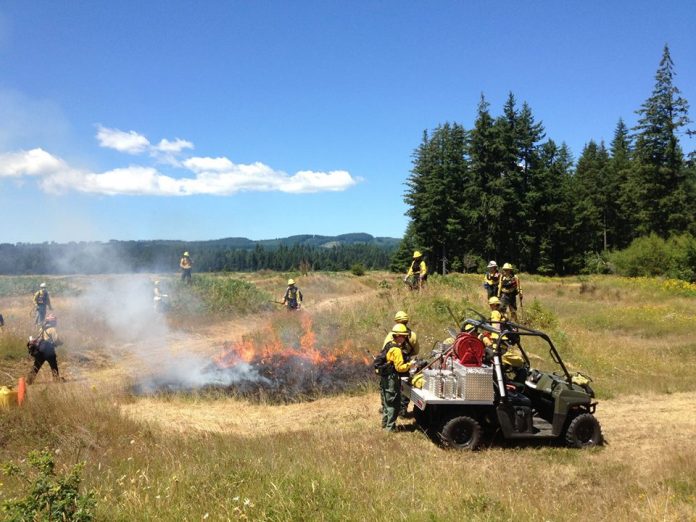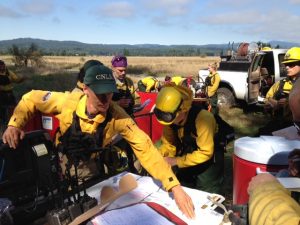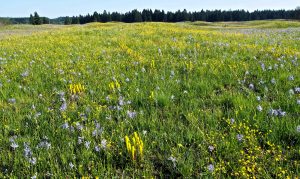
Submitted by the Center for Natural Lands Management – South Sound Prairies Program
It is the end of the summer and our Western Washington prairies show all the signs of a landscape that has received little rainfall. The native bunch grasses are dried and crispy and the small shrubs are brown and desiccated. The ground is dry and thirsty yet a team of qualified firefighters is turning up the heat even further: they are burning the landscape.

The firefighters belong to the South Sound Burn Program, a joint effort between the Center for Natural Lands Management (CNLM) and Joint Base Lewis-McChord (JBLM)to use fire as a restoration tool to control invasive weeds, clear the way for the planting of native species and reduce the risk of wildfire. The program allows CNLM and JBLM to pool resources, enabling them to increase their capacity to restore and protect the landscape, while keeping their individual operational costs low.
Fire is not new to the prairies. “The native prairies essentially evolved with fire,” said Mason McKinley, the Center for Natural Lands Management’s Fire Program Manager. For thousands of years Native Americans conducted ecological burns on these prairies. The grasslands were burned in the summer and fall to encourage the growth of camas, spring gold, and other prairie-dependent flowers with bulbs or roots, which native people harvested as a major food source. The burning also improved the habitat for overwintering elk and deer, allowing Native Americans to hunt closer to home.

While there is a statewide burn ban put in place by Washington’s Department of Natural Resources to reduce the risk of wildfires, the South Sound Burn Program was granted an exception this past Saturday thanks to their impressive track record of safely conducting more than 50 prescribed fires each year throughout the last 10 years. The program includes a crew of more than 30 trained firefighters plus a fleet of fire engines and ATV vehicles.
The program plans to conduct prescribed burns this week at Thurston County’s Glacial Heritage Preserve, Washington Department of Fish and Wildlife’s Scatter Creek Wildlife Area, and Rocky Prairie Natural Area Preserve.




















































